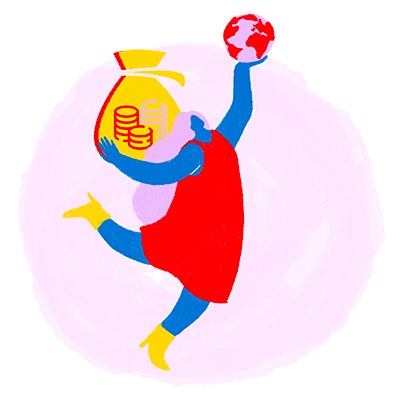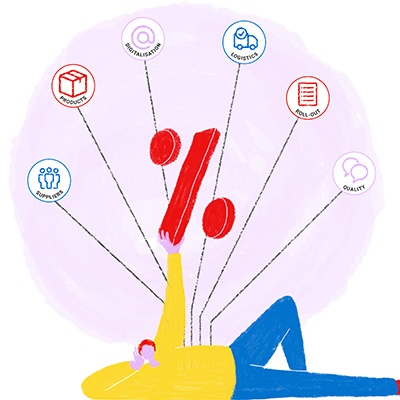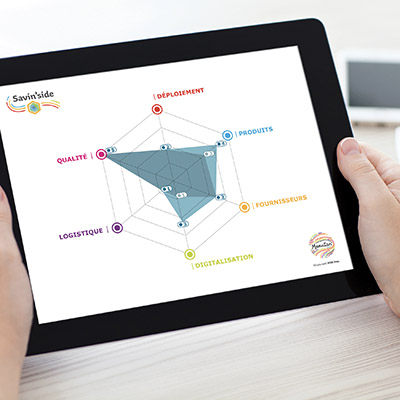In the face of growing environmental and economic challenges[NE1] , businesses are increasingly adopting responsible procurement practices. This approach involves considering the entire product life cycle, from resource extraction to waste management. A critical aspect of this journey is rethinking how professionl furniture and office equipement are handled at the end of their lifecycle[NE2] . Today, markets are developing, and many virtuous solutions exist.
Which professional furniture can be recycled?
Currently, almost all furniture categories can have a second life. This furniture is typically multi-material: Wood, plastics, metals, textiles, leather… Waste recovery [NE3] professionals are well-versed in handling these materials. Thus, nearly all used furniture is eligible:
- Desks;
- Tables;
- Chairs;
- Armchairs;
- Cabinets;
- Various storage units;
- Reception and relaxation furniture.
Even partitions can be recycled!
To give professional furniture a second life, businesses can approach eco-organisations and suppliers. More and more stakeholders are mobilising for a more responsible model by offering collection and revaluation of certain products. Manutan is a prime example for professional furniture.
The take-back process isn’t determined by the product’s condition. The furniture can be broken, show signs of wear like scratches, impacts, or be in excellent condition. This simply influences the subsequent process. Several scenarios are possible: Second-hand, reuse, upcycling, and recycling.
-
Second-hand: Furniture in good condition can directly enter the second-hand market. This might involve donating to social economy enterprises.
-
Reuse: Depending on their condition, furniture undergoes several phases: Repair, cleaning, painting… before returning to the market as refurbished [NE4] furniture.
-
Upcycling: As defined by William McDonough and Michael Braungart, upcycling is "the action of recovering materials or products that are no longer in use to transform them into materials or products of superior quality or utility. We therefore recycle 'upwards'."[1]
-
Recycling: This involves using the raw materials from discarded furniture to manufacture a new object or to supply energy recovery installations.
Beyond furniture, what can be recycled in the office?
In businesses, furniture isn’t the only recyclable item. All materials, equipment, and supplies that compose the work environment are concerned. Here are three key examples.
Electronic equipment
Old IT and telephony equipment (computers, smartphones, tablets, various accessories…) often end up in a company storage room or, worse, in landfills.
The average lifecycle of an electronic device is only a few years. This is quite short considering the environmental impact of manufacturing these products. That’s why it’s imperative they join a refurbishment program [NE5] or be recycled to recover raw materials.
However, it’s crucial to remember that "the potential energy savings from resale or upgrade is approximately 5 to 20 times higher than recycling."[2]
Packaging materials
In warehouses, teams use a significant amount of cardboard [NE6] quantity of cardboard, packaging materials, pallets… These are precious materials whose lifecycle can be extended.
At Manutan, for example, we’ve deployed several solutions in our European centre. We’ve invested in a cushioning machine that creates packaging materials from cartons received from our own suppliers. Additionally, we have an operator entirely dedicated to repairing broken pallets for reuse during customer deliveries.
Each year, this system produces over 50 tonnes of packaging materials and repairs or repurposes more than 10,000 pallets.
Printer cartridges
Despite their size, ink cartridges have a major environmental impact.[NE7] They often end up in landfills, taking decades to decompose. However, increasingly more collection and revaluation systems exist for these products. Some cartridges can be restored to working condition or valorised energetically in specialised installations.
How does this integrate into a responsible procurement strategy?
Recycling office furniture and equipment fully fits within a responsible procurement strategy. However, it’s important to specify that this is just a tiny part. Considering the end-of-life of purchased goods requires thinking ahead in the purchasing process[NE8] . This involves examining materials, availability of spare parts, and collection and revaluation services offered by suppliers. These elements influence product end-of-life modalities.
Businesses can go further by purchasing reconditioned products. Just because a product no longer meets your needs doesn’t mean you must buy new. Especially since the reconditioned market, particularly for professional furniture, is growing. These products offer an excellent value for money[NE9] . "If you buy second-life products, the price difference is 30 to 50% cheaper than new," says Philippe Mallard, Managing Director of Manutan’s Local Authorities[NE10] division. It’s also a secure and transparent process, managed by professionals.
Other options include functional economy. This involves paying for [NE11] usage or performance rather than buying a product. The concept relies on a service logic with efficiency commitments. The idea is, for example, to pay for the light consumed by your company, rather than buying a specific number of bulbs. This promotes sustainable, trust-based client/supplier relationships.
You understand now that revaluing or recycling furniture is part of a global responsible procurement approach. However, this applies to all other office and warehouse products: packaging, electronic products, ink cartridges… and much more. Ultimately, by adopting these best practices, you materialise your ecological commitment while reinforcing your image as a responsible company.
[1] William McDonough and Michael Braungart, "Cradle to Cradle: Remaking the Way We Make Things", 2002
[2] Kuehr, Ruediger & Eric Williams (eds.): Computers and the Environment: Understanding and Managing Their Impacts, Kluwer Academic Publishers, EcoEfficiency in Industry and Science Series, Dordrecht/NL, October 2003, 300 pages









